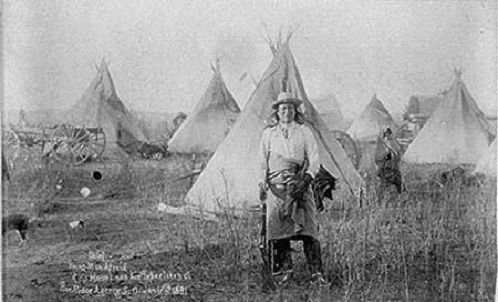By Sarah-Claire Jordan
 The Dakota people are an indigenous group that live in both the U.S. and Canada. They are part of the bigger Sioux tribe. In the U.S., they are found in North and South Dakota, Nebraska, Minnesota, and Montana. The Canadian provinces of Manitoba and Saskatchewan are home to Dakota communities as well. The Dakota language is part of the Siouan language family and belongs to the more specific Mississippi Valley Siouan language branch.
The Dakota people are an indigenous group that live in both the U.S. and Canada. They are part of the bigger Sioux tribe. In the U.S., they are found in North and South Dakota, Nebraska, Minnesota, and Montana. The Canadian provinces of Manitoba and Saskatchewan are home to Dakota communities as well. The Dakota language is part of the Siouan language family and belongs to the more specific Mississippi Valley Siouan language branch.
Two main dialects of Dakota are known, and they are Eastern and Western Dakota. Eastern Dakota can be further divided into two sub-dialects, Santee and Sisseton, while Yankton and Yanktonai are sub-dialects of Western Dakota. Upper Yanktonai is a variant of the Yanktonai sub-dialect. Lakota, another closely related Siouan language, is sometimes considered a dialect of Dakota or vice versa, although the Western Dakota dialects are more mutually intelligible with Lakota.
Originally, the Dakota language was written using a system of pictographs, where a drawing represented its meaning exactly. For example, a drawing of a cat meant “cat”, and so forth. This allowed the Dakota to record a history of their winters and other seasons and participate in censuses, but later on when missionaries arrived and wanted to teach the Bible, things got complicated. There was no way the Bible could be translated using pictographs, so a writing system based on the Latin alphabet was needed.
Different missionaries came up with different writing systems, however, which led to confusion about how one should write the Dakota language. This confusion continues today, though there is more or less a set writing system. However, the Dakota themselves along with linguists continue to tweak the system in the pursuit of the perfect one. Despite this confusion, you can still find many different written examples of Dakota in the form of stories, books, and even board games. There are language learning resources as well, which will help keep the Dakota language alive.
Dakota has all five of the vowels used in English, plus three nasal vowels. The language is polysynthetic, meaning any number of morphemes, or word parts, can be grouped together to form one word. Syntax in Dakota is mostly subject-object-verb, but this depends on the structure of the whole sentence and whether it includes certain types of clauses or not. It is much less complicated than some other indigenous languages of North America.
In terms of education, the different ideas about Dakota orthography can make it difficult to maintain constancy in terms of what each individual student is being taught. However, there are still Dakota language programs for anyone from preschool to university level. There are also language learning resources available as mobile apps, software, websites, CDs, DVDs, and more.
A curriculum with language learning materials has been developed and is available as well, with textbooks full of illustrations and consistent both pedagogically and linguistically. Hopefully this will be enough for future generations of Dakota speakers, as younger speakers tend to favor English and may only speak Dakota at home.




